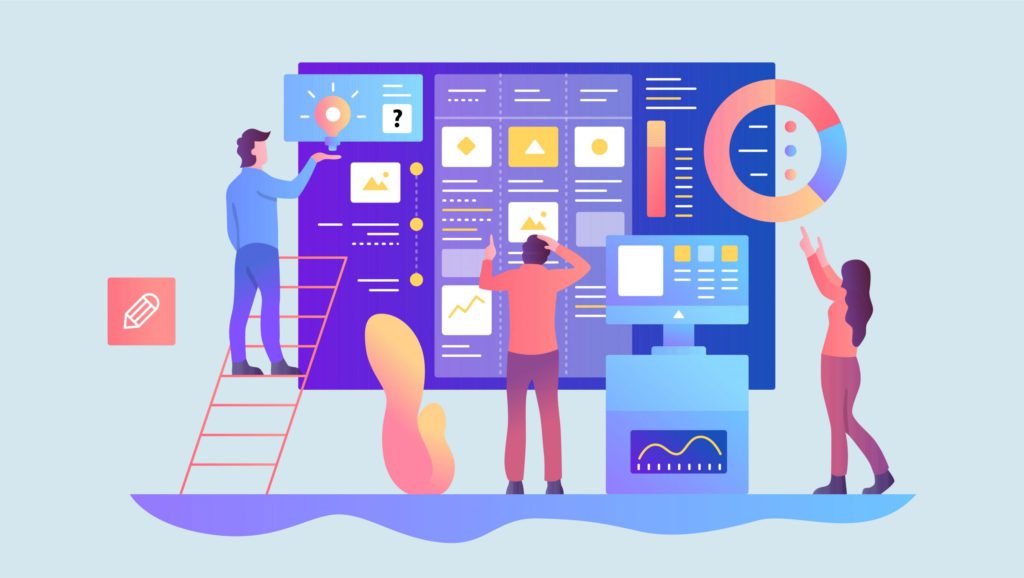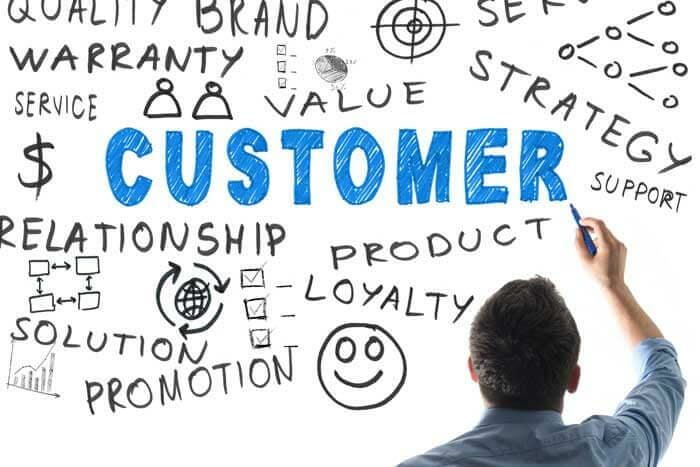Guest Author: Diptish Datta, VP Support, Fetch Robotics
I’ve seen that customer expectations are evolving rapidly but that most companies are just trying to apply patches to their old processes in order to try to delight their customers.
Unfortunately, more often than not, these efforts are falling short. With digital transformation trends and pandemic-related changes leading to a seismic shift in customer behavior, companies that don’t adapt are suffering or dying.

These and other trends are driving an explosion in both data volume and type, making it impossible for organizations to make heads or tails of it when trying to find out what’s really going on.
When you have Salesforce, Splunk, ServiceNow, Oracle, and other platforms adding their own analytics to interpret their data but only their data, it is left as an exercise for the user to figure out how to make these data silos play nice together and find global insights across them.

That means limited visibility, time lags, and errors.
Even using a dedicated analytics platform, you usually either have to consolidate/stitch the data fields together yourself or are limited to getting answers only the questions you can think to ask.
This creates blind spots in your decision making and doesn’t help you if you don’t know what you don’t know.

It also makes it challenging to figure out what to do with the metrics you generate.
All of this prevents you from figuring out what’s really going on with your customers and what’s driving their behavior.
The result is that you leave revenue on the table that you otherwise could earn.

Fixing this requires a new way of thinking about analyzing and interpreting your data.
As I discussed in a recent webinar, this involves incorporating 5 key changes to traditional approaches to satisfying customers with the goal of driving retention and lifetime revenue.
- Consolidate your data

You do this anyway, but probably with Excel or some other slow, error-prone manual process. Even using a data science team is often not the best choice because they can be slow and expensive.
There are also specialized apps out there that do this but they miss some or all of the other key requirements outlined below.
Doing this right gives better visibility, better answers, clearer trends, and more effective decisions on delighting customers
2. Automate everywhere

With all the data, sources, data volumes, approaches, and internal groups, the only way to manage the decision-making process in a timely way is through automation. Any other path will not scale or be sustainable.
Automation is really hard to get right but it is mandatory to keep up with digital transformation- and RPA-driven requirements.
Like data consolidation, there are solutions available to automate part of the data-to-decision process but they often only handle one piece of it and the rest is left as an exercise for the user.
Getting this right helps speed business decisions, improves understanding of factors affecting a business, reduces overhead and cost of satisfying the needs of customers, and builds stronger customer loyalty.
3. Apply data science, AI, ML

A common theme here is growing data volumes and complexity and the requirement for timely response to changing customer expectations. Understanding the data, reacting to it, and building accurate models to analyze it are key components of that.
This is where AI/ML and data science come in.
But automating these technologies is extremely difficult. That’s why most tools available take you part of the way yet, like was already mentioned, leave much of the heavy lifting to the user.
Analytics are only as good as the data quality and how that data is processed and interpreted. Understanding and responding to insights rapidly and accurately helps meet customer needs even before the customer is aware of them.
This seamless servicing of customers drives increased business and lower churn.
4. Enable self-service customization

Visualization is key to making use of analytics by humans. And there are lots and lots of tools out there to provide this if you give them the parameters.
This can be found either as part of established CRM/BI and other tools or as stand alone software to import data and then enable the creation of dashboards.
But creation of these dashboards often suffers from two shortcoming:
- In many cases, dashboards must be custom built by tool vendors, internal experts, or IT. This is a clumsy and slow process if analytics needs are changing rapidly.
- Also, dashboards created by humans or existing tools depend on the user knowing what questions they are looking to answer. In many cases, there are competent solutions to answer known questions. What’s missing is the generation of insights on questions that should be asked but are unknown and intuitive dashboards to highlight these insights.
Empowering users to create custom dashboards quickly on the fly and uncover insights that would have been otherwise missed is the only way to stay ahead of customer needs.
Getting this right dramatically improves employee effectiveness and business growth and is a key aspect of a modern data-to-decision customer experience flow.
5. Generate both predictive and prescriptive analytics

Analyzing and understanding what happed in the past helps explain where a business has been. But decisions today should be based on where customer trends are going and where a business wants them to go.
That requires predictive analytics, i.e., what is going to happen.
More importantly, business want to know what they should do in order to guide the trajectory of customer satisfaction where they want it to go.
That requires prescriptive analytics, i.e., what a business should do to delight customers.
A key requirement is that these analytics be actional/operational. They must be easily understood and implemented. Seeing what to do is irrelevant if no one follows through.

Getting this right avoids a lot of stumbles and false starts, keeps a business focused on customer needs, and creates a strong foundation for driving renewals.
None of these initiatives are particularly new or surprising. Most organizations understand their value.
The challenge is pulling them all together and getting it right. It takes a lot of time and knowledge to develop and integrate them all together into one continuous data-to-decision process.
Many businesses are already working to deploy and integrate at lease some of these.
Most medium-sized companies try to do it manually with software tools they purchased for other purposes. For most parts of the flow, you’ll find “there’s a tool for that.”
But you have to learn and manage all of them and try to make them all work together efficiently and accurately.

Larger enterprises assemble BI and data science teams to create custom processes to bring it all together.
Both approaches are inefficient, given the time and opportunity costs they incur.
There is no shortage of analytics applications that claim to provide these capabilities, at least in part. These often provide real value in solving a particular problem or challenge in the analytics/insights flow.
They all fall short, however, in addressing the entire spectrum from consolidation to insights, which leaves holes that the business is left to fill, either with in-house work or by kludging apps from multiple vendors together to develop something piecemeal.
To develop a truly customer-centric and responsive service and experience infrastructure, business must take a holistic approach that is fast, efficient, accurate, and proactive. If this was easy, everyone would do it.

But achieving this would transform customer experience into a primary driver of organizational agility and competitiveness, with a real impact on the bottom line.



